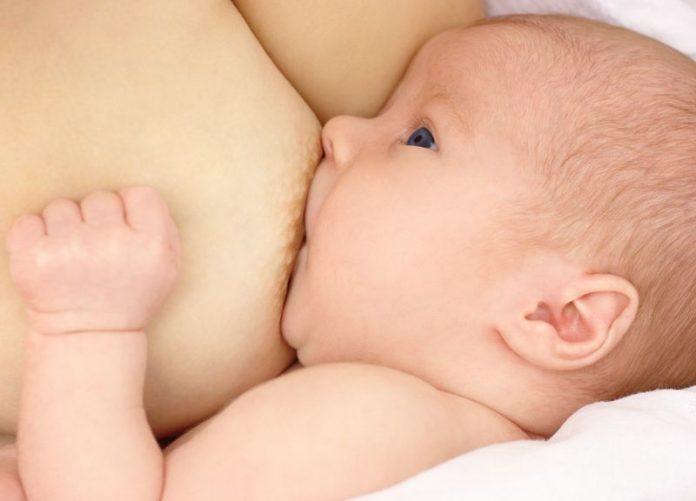What picture does your mind conjure up, the moment you utter the word breast-feeding? It brings the picture of mother-child bonding. Truly, breast-feeding strengthens the special bonding between the mother and the child.
According to WHO, breast-feeding is the best method of feeding a child in his or her first year.
During the latter half of pregnancy, the woman’s breasts start making colostrum, a thick, yellowish fluid.
It contains high amounts of white blood cells and antibodies, and is high in immunoglobulin A (IgA), which coats the lining of babies’ intestines, and prevents germs from entering the baby’s system. After 3-4 days, it changes into mature breast milk.
During pregnancy and the first few days postpartum, milk supply is hormonally driven, but after it is more firmly established, then milk production depends on supply and demand.
Milks ingredients are based on the mother’s food supply and the nutrients in her bloodstream. If it is inadequate, then the mother’s bodily stores serve the purpose.
Its composition varies even from hour to hour, depending on both the manner in which the baby nurses and the mother’s food consumption and environment.
Breast-feeding is beneficial for both mother and child. It has been seen that breast fed babies have a decreased risk for several infant conditions including Sudden Infant Death Syndrome.
The sucking technique helps the development of both the teeth and other speech organs. The milk lowers the risk of and protects against diseases such as diabetes, gastroenteritis etc.
It is also seen that breastfed children, on average, score higher on IQ tests than children who had not.
In mother, it releases hormones that relax her and lets her experience nurturing feelings. This is very important since up to 80% of mothers suffer from some form of postpartum depression.
It increases oxytocin helping in the quick contraction of the womb, and decreasing bleeding after the birth.
It helps the mother to regain her figure as the fat is used in milk production. It also delays the return of menstruation and fertility. Mothers also have a reduced risk for both ovarian and breast cancer.
Since the nutritional requirements of the baby are satisfied solely by the breast milk, it is important that the mothers have a healthy diet.
So, a high calorie, high nutrition diet should continue from pregnancy. Experts advise approximately 15001800 calories per day, because a malnourished mother may produce milk with decreased levels of vitamins.
Though no foods are absolutely contraindicated, but if a baby shows sensitivity towards any food then the mother should not have it.
Breastfeeding mothers SHOULD NOT SMOKE! It reduces the milk supply and causes vomiting, diarrhoea, rapid heart rate etc in infants.
Alcohol consumption also harms the infant, causing problems with motor skills development and weight gain.
Even caffeine consumption should be kept under control since its excess consumption causes trouble for the infant.
Remember, an amount of skill is required for successful feeding and you must use a correct technique.
Start by tickling the baby’s cheek with the nipple and he/she opens the mouth and turn towards the nipple, it should be pushed in so that he/she has a mouthful of nipple and areola; the nipple should be at the back of the baby’s throat. The positions are:
a) Upright: A sitting position with the back straight.
b) Mobile: The mother carries her baby in a baby carrier while breastfeeding.
c) Lying down: It is good for night feeds or for mothers who had a caesarean section.
d) On her back: Here the mother is usually sitting slightly upright
e) On her side: Both of them lie on their sides.
Breast-feeding may hurt new mothers sometimes but don’t worry, it is mostly related to an incorrect technique, and eases over time.
Sometimes the milk ducts can block up leading to breast engorgement or mastitis, and you can be cured of this with massage and by encouraging the baby to suck from that side to keep it as empty as possible until the problem goes.
Remember, though breast-feeding can be harmful to the infant if the mother has HIV or active tuberculosis but otherwise it is the best food for the infant.

